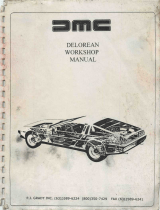
Installation Instructions for p/n BVV-3 onto BVV2CYL & BVV4CYL
Background: The BVV2CYL & BVV4CYL use a pressure-less crank system to prevent solvents from
encountering bearing lubrication used in the unit. The isolation of the bearing lubrication is required to meet
FDA rules on food handling. With the piston seal being the primary seal, daily inspections for leaks are
recommended.
The presence of residual resins in the solvent can collect in the compressor. The use of a molecular sieve or
coalescent oil separator is required to prevent resin/oil from contaminating the compressor and potentially
damaging to the piston seals.
The use of this equipment with ASHRAE Class A3 flammable gases make this a hazardous application.
Proper training of personnel handling Class A3 refrigerants is required. Proper ventilation and
continuous monitoring of the work area where the unit is located is required.
The BVV-3 kit contains:
● 2 Piston Top Plates with Seals pre-installed
● 2 Piston Wear Bands
● Piston Top Installation Tool
● Two BVV-3 will be required for BVV4CY installation.
Additional Tools and Supplies required for the installation:
○ 3/16” Allen Hex Wrench
○ #2 Phillips Screwdriver
○ 5/8” Socket and Ratchet Wrench
○ Torque Wrench
○ 242 Loctite
○ Vise Grips







